Images of the visit to Rema
From November, 13 to 29, Konrad Fleig and Dr. Dirk-M. Harmsen from Germany visit the village Rema in the highlands of Ethiopia. Thanks to the Solar Energy Foundation eco-friendly and cost-efficient solar light is available in this region. The required structures are controlled by the natives. The following images show the many positive impacts of this project. It is a showcase also for other developing countries.In Germany the personal rights are well developed.
Nobody must accept the publication of the own portrait.
Please send us an email if you want that we delete an image on which you are visible:
Markus Mueller <sp-sb2
How Solar Light Changes the Life in a Village
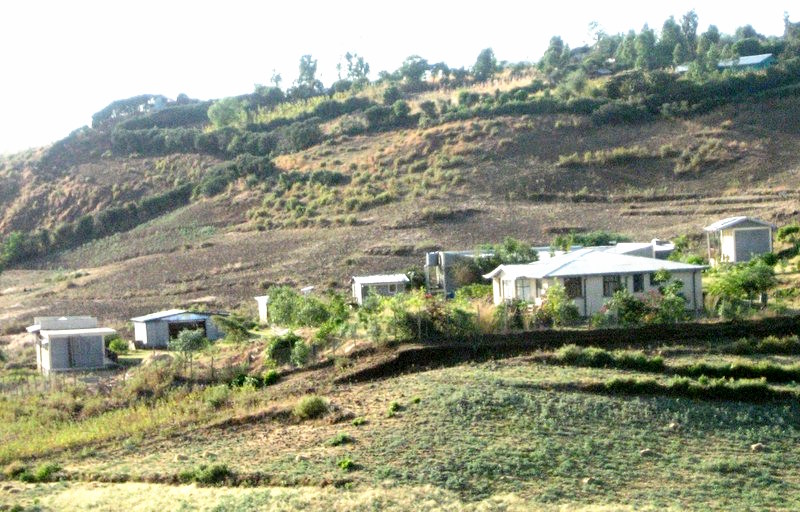
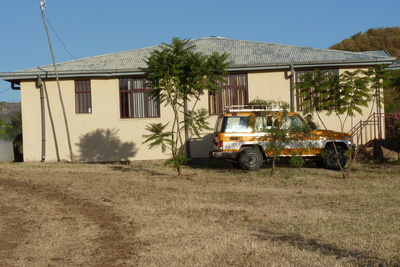

Training center of solar engineers in Rema with guest house and bedrooms
for 25 students.
The training course lasts about six months.
Until now already 64 engineers could by qualified.
They operate in 14 solar centers and provide 83 villages with solar light.
The training course lasts about six months.
Until now already 64 engineers could by qualified.
They operate in 14 solar centers and provide 83 villages with solar light.

The deputy mayor of Rema and the near Rema Dire informs us about the
development of the village:
Since five years all 2,200 tukuls or houses have solar light.
Since then the people need not spend money for the expensive lamp oil.
They save 40 liter per lamp and year. Today the people may use this money for more important things.
Since five years all 2,200 tukuls or houses have solar light.
Since then the people need not spend money for the expensive lamp oil.
They save 40 liter per lamp and year. Today the people may use this money for more important things.
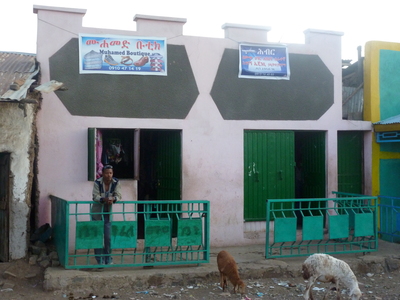

The first citizens of the village built a solid wall as front of their houses.
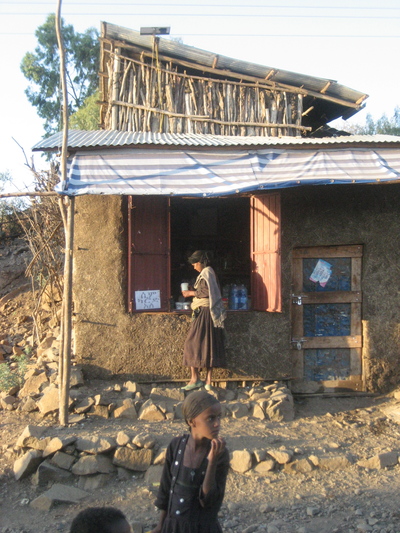
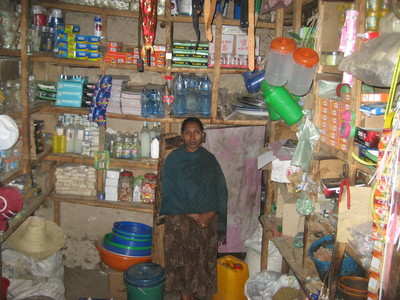
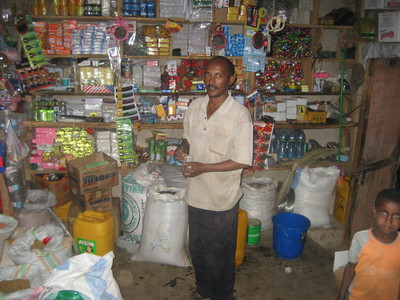

Committed women and men of the village went into business for themselves
with a little store.
They offer the villagers a plenty of different foods and commodities.
In the past these things could not be bought in the village.
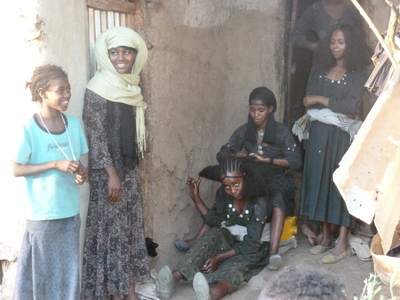

Proudly young handicrafts show their hair craft or tailoring
when we accompany the solar engineers on their visit to the village.
They know that we support the solar engineers. They call the solar engineers - and thereby also us - „light-bearers”.
They know that we support the solar engineers. They call the solar engineers - and thereby also us - „light-bearers”.

A young woman opened a small „bar” and provides us
with a cool drink. The fridge works with solar electricity!
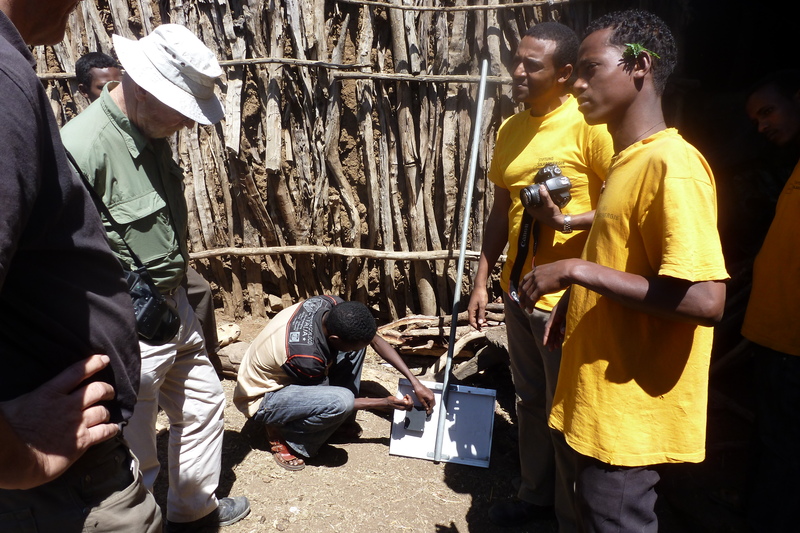
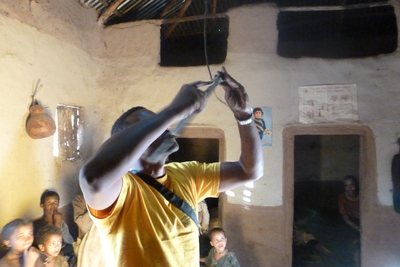

The solar engineers demonstrate the repairing of a broken solar module
and a light switch.
Without the local engineers the solar lamps would probably remain broken
forever.

The solar systems got a place of honor in the tukuls.

In the first museum of the village the lamp oil cans which are not needed
any longer and other utensils are exhibited.

A great desire of the village folk was from the very first the installation
of street lights.
The sunset is already at 6:30 p.m. and the night lasts about 12 hours.
This is because of the near equator.
Thanks to the street lights the village life could be continued also after
the sunset.
The Vexed Water Problem in Rema

Currently a big problem in Rema is the water supply.
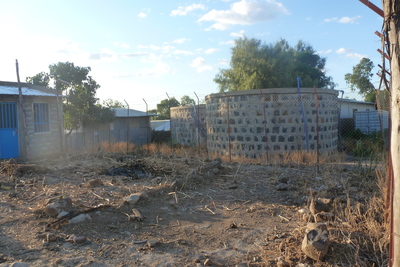

There are two big cisterns in the village and a water treatment plant.
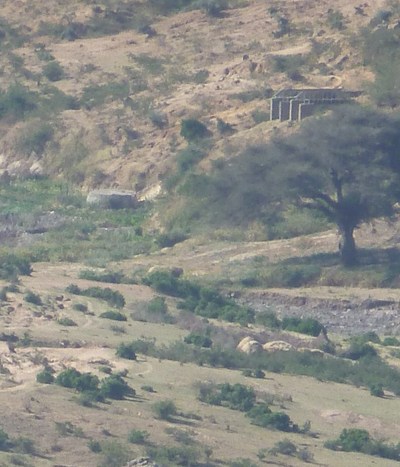

300m below the village there is a spring in the valley.
By the power of a solar plant the water is pumped up 100m.
The power which was needed for the remaining 200m was provided by a
diesel generator.
Since several months this generator is out of order and beyond repair.
Therefore women, girls and jackasses must painfully carry the water 200m up
into the village.
The problem will be solved soon: Two further solar plants and two water pumps are already funded and on the way to Rema (as at January 2013).
Then the women and girls are freed from their heavy burden.
Here you can find images of the construction progress (Sorry, only in German).
The problem will be solved soon: Two further solar plants and two water pumps are already funded and on the way to Rema (as at January 2013).
Then the women and girls are freed from their heavy burden.
Here you can find images of the construction progress (Sorry, only in German).
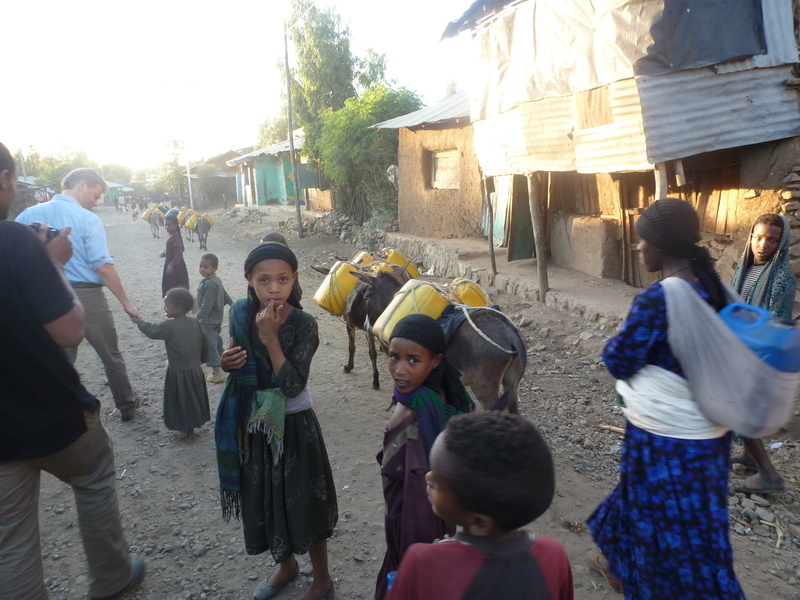
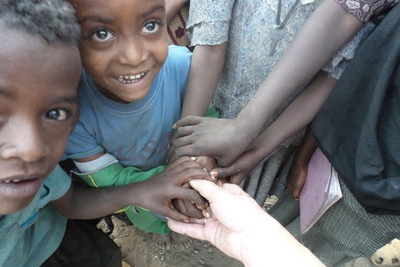
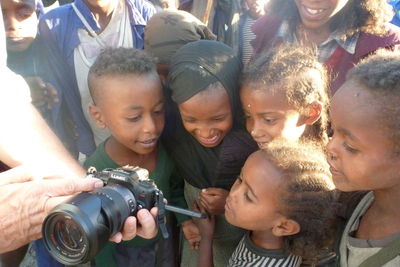
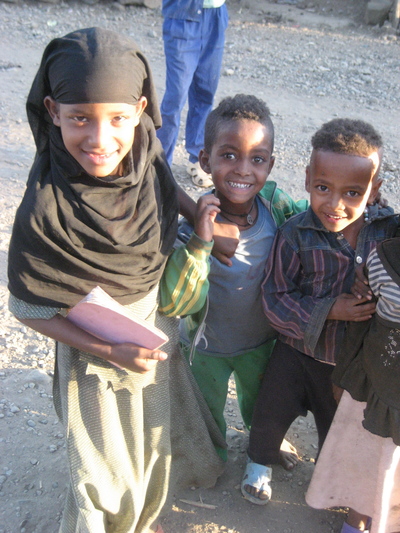
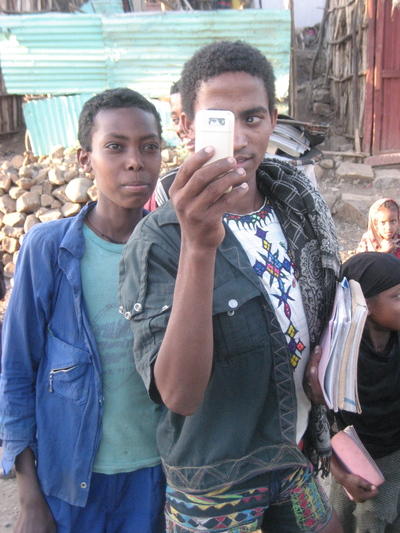
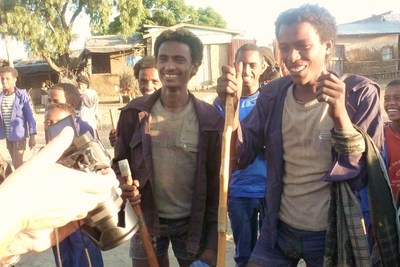
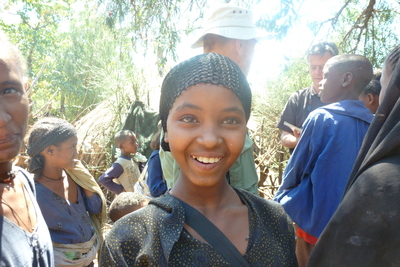
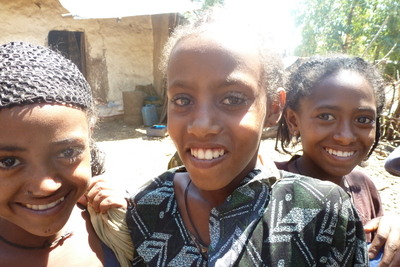

All over the village we are welcomed by the people.
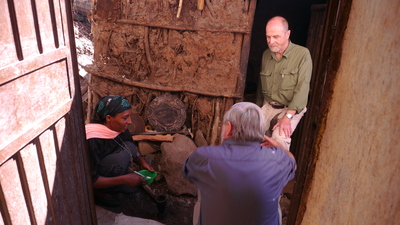
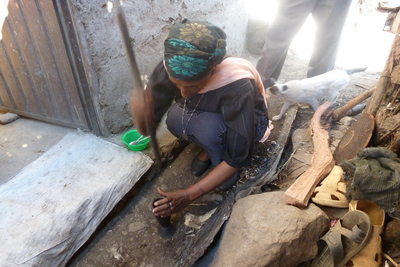
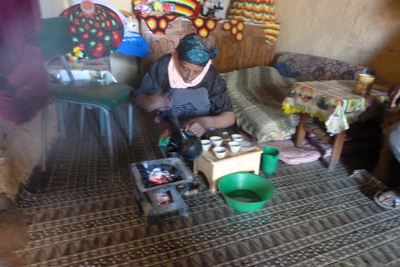

We speak with Mrs. Nadew Gebayensch.
She performs a typical Ethiopian coffee ceremony.
Ethopia is the country of origin of coffee.
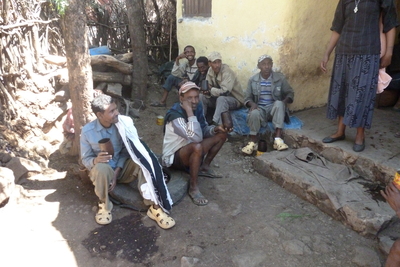

Every week Mrs. Gebayensch brews 120 liter beer from sorghum.
Regularly the beer is drunk on Wednesday by the village folk.
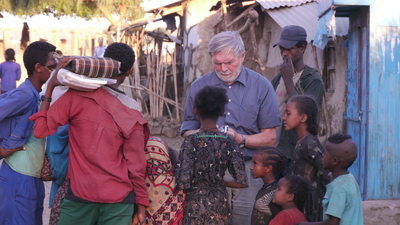
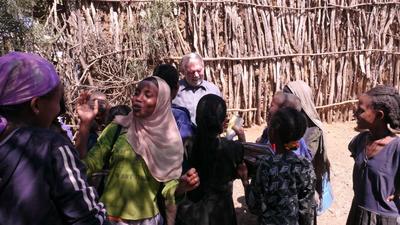
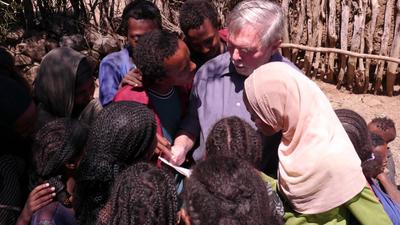
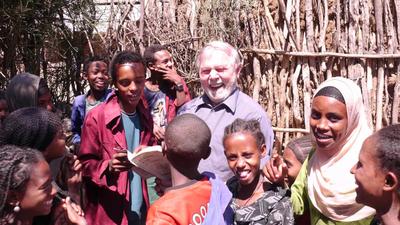
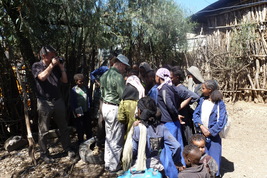


When school ends the students surge back to the village and
want to demonstrate what they have learned at school.

The people follow us until into the tukuls.

In spite of the difficult circumstances the people look hopefully ahead.

A young mother with her child on her arm.

All men are glad when they see their own photo.
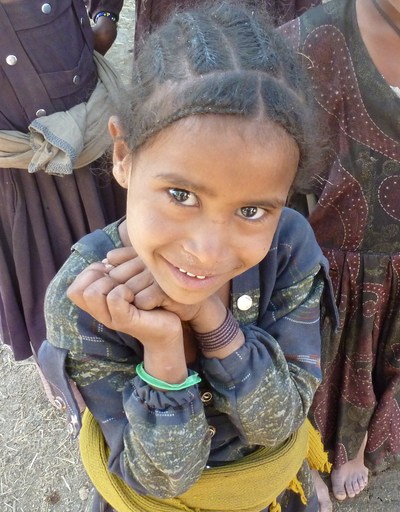
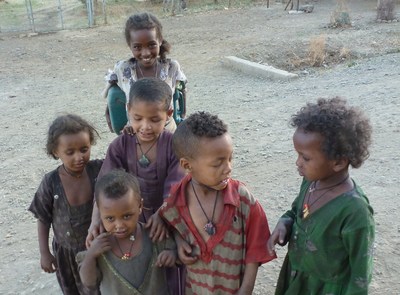
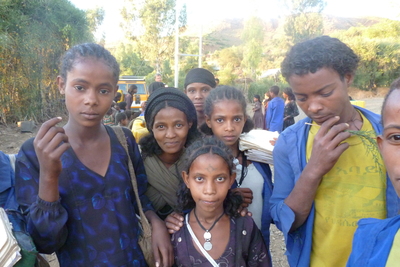

All men are open-minded about us.

This elderly man spontaneously shakes hands with me.
The thankfullness is not only for the „light-bearers”, as the solar engineers are called by the village folk. It is also for all who support and facilitate the project, because it improves essentially the situation in the countryside.
The thankfullness is not only for the „light-bearers”, as the solar engineers are called by the village folk. It is also for all who support and facilitate the project, because it improves essentially the situation in the countryside.
The Center of the Solar Energy Foundation in a working area 20km outside of the Capital Addis Ababa

„Enlightening Life” - 200 m to the right ... ☻☻☺☻
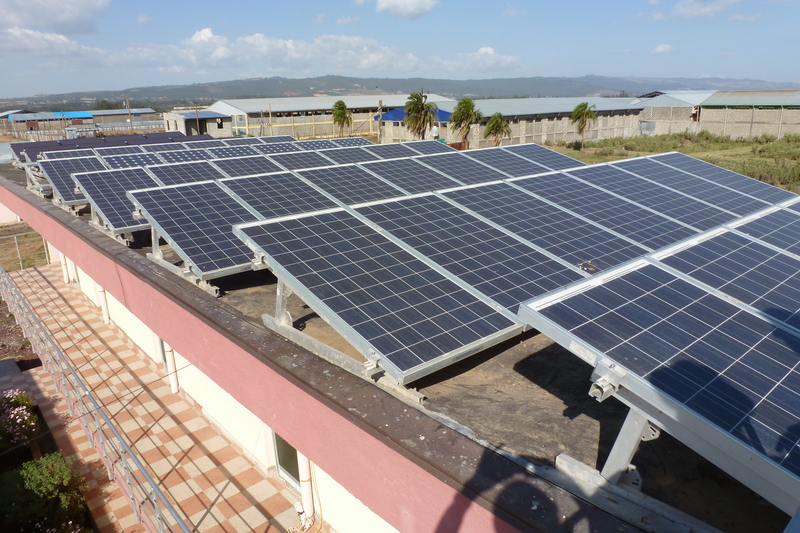
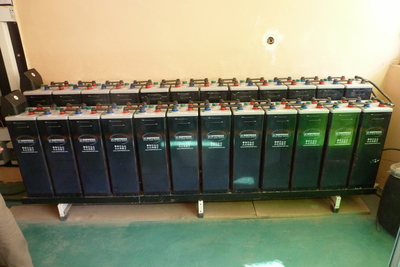

This is the solar plant on the roof of the administrative building.
Storage batteries and AC inverters provide 220 Volt AC-voltage for the center.

The executive team of the Solar Valley
From the left: Solar inspektor Mena Hailemaikel; lead of the project Samson Tsegaye;
At the right: PR agent Abved. He accompanied us on the visit to Rema.
From the left: Solar inspektor Mena Hailemaikel; lead of the project Samson Tsegaye;
At the right: PR agent Abved. He accompanied us on the visit to Rema.

In the center in Addis Ababa all operations are registered which
are monthly reported by the 14 solar centers which are spread
all over the whole country.

Administrative officers speaking with Samson.

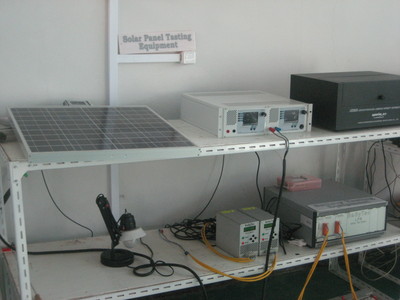
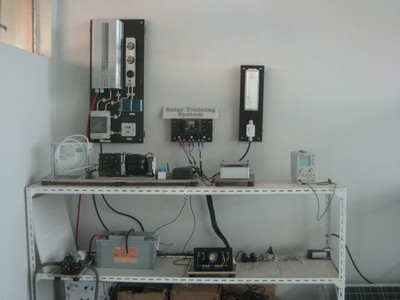
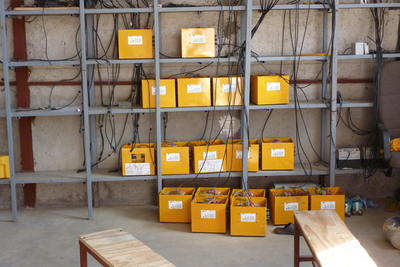

The Solar Valley has an own workshop. There are many analyzers
and checking devices.
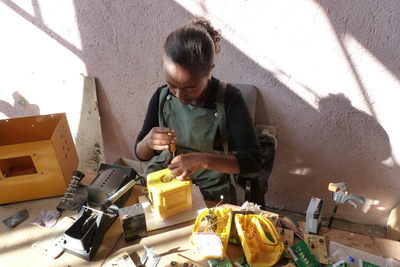
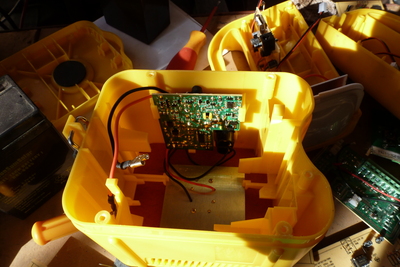

Increasingly the solar plants are assembled in Ethopia.
This creates new jobs in the country.
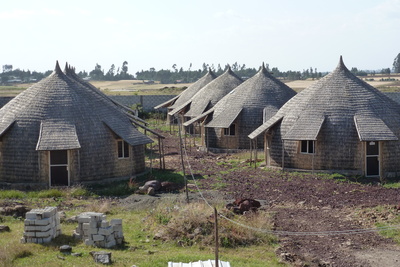

In eight new tukuls up to 32 trainees or course participants may be housed.
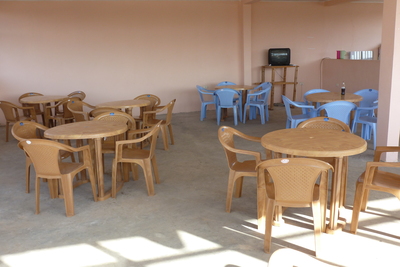
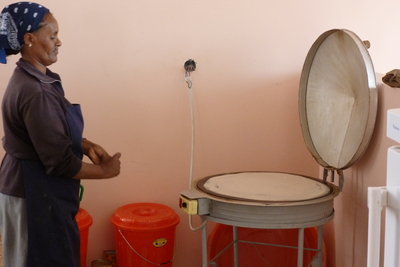


This is the refectory and the kitchen where the Ethopian national dish
Injera
is baked.
Injera is mainly produced from teff flour and served with several meat dishes and vegetables, e. g. Wot.
Injera is mainly produced from teff flour and served with several meat dishes and vegetables, e. g. Wot.

Here teff
is harvested. Teff is almost only grown in Ethopia.
Teff is a type of corn with very small seeds: Thousand grains weighs
less than a half gram.
Teff is gluten-free and therefore suited for persons with
gluten intolerance.

Our farewell picture with Samson.
The Trip from Addis Ababa to Rema
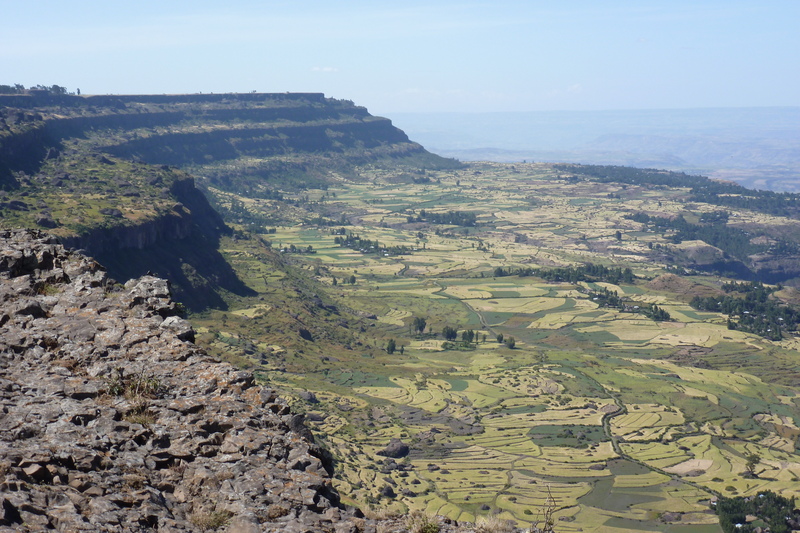


During the trip from Addis Ababa to Rema we pass the edge of the
Great Rift Valley.
We look from the height of 2,640m down to the valley which is about 1,300m below.
Here is a German version of this report.
 Gerechtigkeit schafft Frieden -
Gerechtigkeit schafft Frieden -